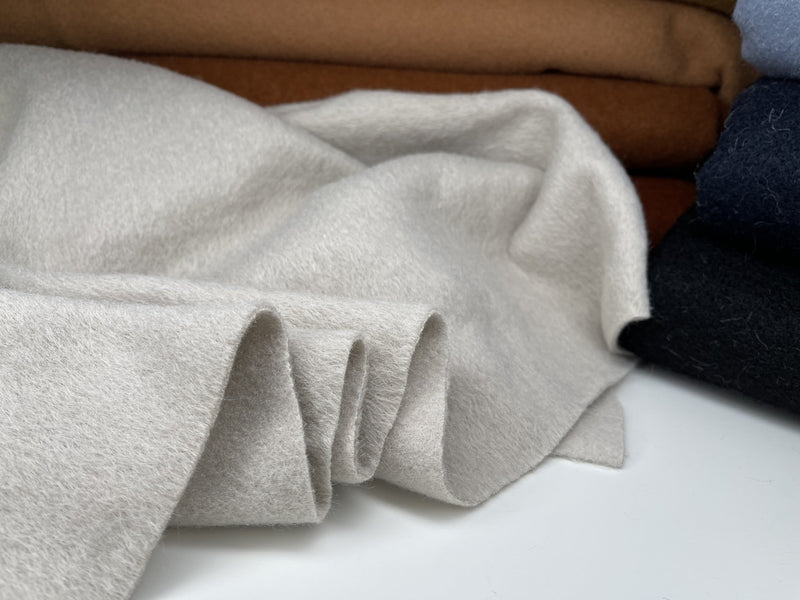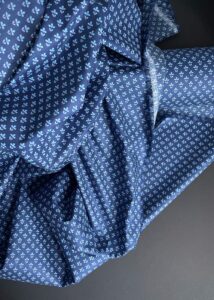What Percentage of Wool to Mix with Fleece?
Creating garments and textiles involves a delicate balance of fabric compatibility. Wool and fleece are popular choices, each offering unique benefits. This article explores how to effectively blend these fabrics, what percentage of wool to mix with fleece, and the considerations involved in this textile pairing.
Introduction
Fabric compatibility is crucial in fashion and sewing, affecting the final product’s look, feel, and functionality. Wool and fleece can complement each other when mixed, offering warmth and comfort. In this guide, you’ll learn about their compatibility, the benefits of mixing them, and practical tips for sewing and caring for these fabrics.
Compatibility Analysis
Yes, wool and fleece can be mixed. This combination works well because both materials offer warmth and comfort, albeit with different properties. Wool is a natural fiber known for its insulation and breathability, while fleece, typically made from polyester, is lightweight and moisture-wicking. When these fabrics are blended, the resulting textile can offer the best of both worlds—warmth from wool and the softness and ease of care from fleece.
Key factors to consider include:
- Texture: Wool’s coarser texture can be balanced by fleece’s softness.
- Weight: Fleece’s lightweight nature complements wool’s heavier feel.
- Stretch: Fleece offers more elasticity, which can enhance the flexibility of wool.
- Care Requirements: Wool requires more delicate care, while fleece is generally easy to maintain.
- Durability: Both fabrics are durable, but fleece’s resistance to pilling can enhance wool’s longevity.
Fabric Properties Comparison Table
| Property | Wool | Fleece |
|---|---|---|
| Fiber Content | Natural | Synthetic |
| Weight and Thickness | Medium to heavy | Light to medium |
| Breathability | High | Moderate |
| Moisture-Wicking | Moderate | High |
| Stretch and Elasticity | Low | High |
| Wrinkle Resistance | Moderate | High |
| Care Instructions | Hand wash, air dry | Machine wash, tumble dry |
| Durability | High | High |
Benefits of Mixing These Fabrics
- Enhanced Texture and Visual Interest: Combining wool’s texture with fleece’s softness creates a visually appealing and tactilely interesting fabric.
- Improved Comfort and Performance: The blend offers warmth, breathability, and moisture-wicking properties, making it suitable for activewear.
- Better Drape and Movement: Fleece’s elasticity provides a more fluid drape, enhancing the movement of wool garments.
- Cost-Effectiveness: Mixing a natural fiber like wool with a synthetic one like fleece can reduce costs while maintaining quality.
- Seasonal Versatility: This blend is suitable for various climates, providing warmth in winter and breathability in cooler summer evenings.
- Design Possibilities: The combination allows for creative design options, from cozy sweaters to stylish outerwear.
Potential Challenges
- Different Shrinkage Rates: Wool may shrink more than fleece, requiring careful pre-treatment and washing.
- Conflicting Care Requirements: Wool’s delicate care needs may conflict with fleece’s ease of maintenance.
- Texture Clash or Pilling: The coarse texture of wool can lead to pilling when mixed with fleece.
- Seam Puckering: Differences in stretch can cause seams to pucker if not handled correctly.
- Color Bleeding or Fading: Wool dyes may bleed, so pre-washing is essential.
Solutions: Pre-wash fabrics, use appropriate needles and threads, and follow specific care instructions to mitigate these challenges.
Sewing & Styling Tips
- Sewing Techniques: Use a ballpoint needle to prevent snags and a zigzag stitch for flexibility.
- Needle and Thread Recommendations: Opt for polyester thread for durability.
- Interfacing and Stabilizer Needs: Use lightweight interfacing to maintain structure without adding bulk.
- Seam Finishing Methods: Consider serging seams to prevent fraying.
- Pattern Selection Advice: Choose patterns that accommodate both fabrics’ properties, such as loose-fitting designs.
- Styling Ideas: For fashion, consider layering pieces like vests or jackets. In home decor, mix these fabrics for cozy throws or cushion covers.
Care & Maintenance Guide
- Washing Instructions: Use a cold wash with mild detergent. Hand wash wool components if necessary.
- Drying Recommendations: Air dry flat to maintain shape and prevent shrinkage.
- Ironing and Steaming Tips: Use a low heat setting and a pressing cloth to avoid damaging wool.
- Stain Removal: Treat stains promptly with appropriate cleaners for each fabric type.
- Long-Term Care: Store garments in a cool, dry place to prevent moth damage to wool.
FAQ Section
-
Can you wash wool and fleece together?
- Yes, but use a gentle cycle and cold water to prevent wool shrinkage.
-
Will wool shrink more than fleece?
- Yes, wool is more prone to shrinkage, so handle with care.
-
What needle size should I use for sewing wool and fleece together?
- A size 80/12 ballpoint needle is recommended.
-
Can you mix wool and fleece in one garment?
- Absolutely, they can be combined for warmth and comfort.
-
How do you prevent pilling when combining these fabrics?
- Use anti-pilling fleece and handle wool gently.
-
Is it okay to mix wool and fleece for upholstery?
- Yes, but ensure the blend is suitable for the intended use.
-
What’s the best way to finish seams with these fabrics?
- Serging or using a zigzag stitch can effectively finish seams.
By understanding these aspects, you can confidently blend wool and fleece, creating textiles that are both functional and fashionable.


Leave a Reply